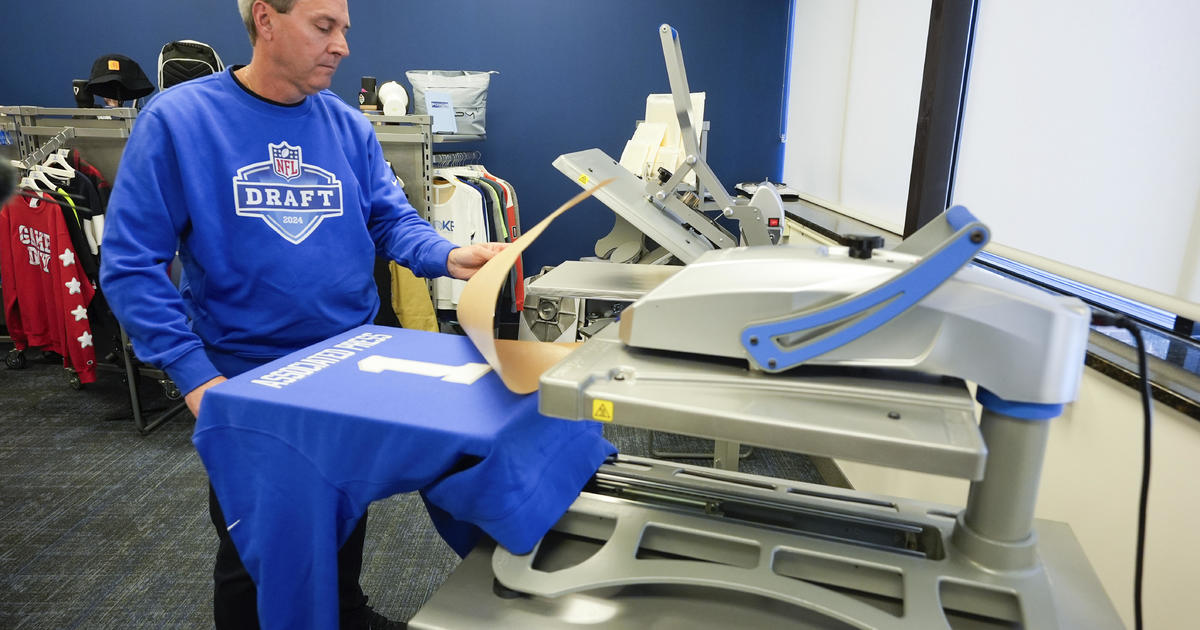Construction Begins On New Dearborn Intermodal Rail Station
DEARBORN (WWJ) - A 12-year vision of expanded, high-speed Michigan passenger rail options moved closer to reality Tuesday at a construction launch ceremony for Dearborn's new Intermodal Passenger Rail Station.
Dearborn Mayor John B. O'Reilly, Jr. welcomed 80 key leaders, including U.S. Sen. Carl Levin (D-Mich.), U.S. Rep. John Dingell (D-Dearborn), Federal Railroad Administrator Joseph Szabo, Michigan Department of Transportation Director Kirk T. Steudle, and Amtrak board chairman Tom Carper, as well as transportation and industry officials.
The ceremony was hosted by Patricia E. Mooradian, President of The Henry Ford, where the event took place.
The ceremony celebrated the collaborative milestone marking the beginning of the construction of this $28.2 million federally funded station, to be built at 20201 W. Michigan Ave., west of the Southfield Freeway at the entrance to Dearborn's west downtown.
The ceremony was held at Greenfield Village within The Henry Ford because the station will be built adjacent to this national Historic Landmark site and will provide improved access to the visitor attraction for passengers arriving by train. Indeed, a second-floor walkway over the railroad tracks provides direct access to The Henry Ford, which lies just south of the station, which faces Michigan Avenue to the north.
At the April 10 launch, invited guests gathered at the historic Smiths Creek Depot inside Greenfield Village to hear details about the dramatic progress expected, and to receive thanks for their support.
The pedestrian-friendly Dearborn Intermodal Passenger Rail Station is intended as a rail gateway to Dearborn and southeast Michigan, officials said. It will allow thousands of passengers per year to make connections to Amtrak's Wolverine service that extends from Pontiac to Chicago; as well as to SMART, DDOT, Greyhound and charter buses; corporate and hotel shuttles; taxis and personal vehicles.
The station is positioned to support the eventual operation of the Detroit to Chicago high-speed rail corridor, which already has seen progress in west Michigan. It will also serve the proposed Ann Arbor to Detroit commuter rail line. Eventually, the commuter rail line will allow easy bus connection to the Detroit Metropolitan Airport.
The station's proximity to the Rouge River Gateway Trail on the north side of Michigan Avenue in Dearborn should prove popular to pedestrians and bicyclists and provide easy access to the campuses of the University of Michigan-Dearborn and Henry Ford Community College.
Preliminary work began in March with utility alterations on the construction site and completion is expected by fall 2013.
As the construction progresses, people traveling down Michigan Avenue will see the intermodal station evolve from a bare footprint to a beautiful two-story brick and glass structure surrounded by ponds and appealing landscaping.
The 16,000-square-foot station will offer amenities like free Wi-Fi Internet access and bicycle racks.
Also incorporated inside will be exhibits by the City of Dearborn, Ford Motor Co., The Henry Ford, Pure Michigan and others.
The site at 20201 Michigan Ave. was previously a parking lot for vehicle storage.
It's estimated that the intermodal station project will create 280 temporary construction trade positions and, when completed, offer 25 permanent positions.
Beyond jobs for those employed in the construction and the operation of the intermodal station, the project is expected to bring dollars from commuters and tourists, be a catalyst for local business growth and lay the groundwork for future economic development.
More than 1.5 million tourists visit The Henry Ford each year. The additional entrance to The Henry Ford will allow visitors to more easily arrive by train for their historic adventure.
The City of Dearborn hopes to enjoy a boost to local business based on what a 2012 Michigan State University study says is a rise in Michigan tourism, especially from out-of-state visitors. Travel spending jumped 7.8 percent last year, with another leap forward expected in 2012.
O'Reilly said the train station will generate more customers for Dearborn.
"This project is part of a larger strategy to increase the number of potential customers coming to Dearborn every day," O-Reilly said. "Increasing the customer base sustains existing businesses and attracts new activity and investment."
Dearborn is courting further economic possibilities with transit oriented development. Research shows people want to live and work near mixed-use residential and commercial areas close to public transportation and, because they do, property values can be strengthened.
The cost of the station, $28.2 million, is fully funded through the federal American Recovery and Reinvestment Act of 2009, better known as the federal stimulus, which allocated the money to the Federal Railroad Administration High-Speed Intercity Passenger Rail Program. The FRA directed the money to the Michigan Department of Transportation for the building of the City of Dearborn's station.
President Obama announced the federal high-speed rail initiative award in January 2010.
The success of the intermodal station project is attributed to multiple stakeholders who partnered with the City of Dearborn to develop the project over a 12-year period of study, site selection, environmental assessment and preparation.
Among the partners are the FRA, MDOT, Southeastern Michigan Council of Governments, The Henry Ford, the University of Michigan-Dearborn and Ford Land.
Dearborn's City Plan Commission approved land use for the intermodal station and the Dearborn City Council approved the purchase of the seven-acre site from Ford Land through the use of federal funds.
The architects are applying a transitional design for Dearborn's intermodal station that employs stylistic elements from historic train stations and juxtaposes contemporary streamlined elements drawn from transportation cues.
The passenger bridge over the tracks adjacent to The Henry Ford and the tower structures will be aligned on an axis with the historic clock tower of The Henry Ford Museum. These elements will help define the sense of place unique to the Dearborn station.
Neumann/Smith Architecture designed the station along with the consultant design firms of SmithGroupJJR (civil engineering and landscape architecture), Quandel Consultants (rail engineering), KMI (rail station consultant architects), Penhale & Yates (structural engineers), DiClemente Siegel Design (mechanical and electrical engineers) and Somat Engineering (geotechnical engineers).
Construction for the station is being managed by Tooles/Clark, which is a joint venture of Tooles Contracting Group of Detroit and Clark Construction Co. of Lansing.
The building and site will be sustainably designed to meet the standards of the U.S. Green Building Council's Leadership in Environmental and Energy Design (LEED) program.
The station will include bicycle racks; a metal roof with solar collectors; energy-efficient lighting; geo-thermal heating and cooling; and storm water management features, such as rain gardens and bioswales.
It is expected these features will have the added benefit of reducing station operating costs.
Exit and entry drives into the intermodal station will be engineered to make access from Michigan Avenue easy. Importantly, a center island will be added to Michigan Avenue in order to accommodate a new safe pedestrian walkway. Additional traffic signals will be installed as well on Michigan Avenue.
During the construction, infrequent lane closures on Michigan Avenue may take place, but for the most part, traffic will proceed as usual.
Amtrak will lease the facility from the city for 20 years and will be in charge of the operations of the station.
Dearborn's current Amtrak train station, built four decades ago south of Michigan Avenue behind the city's Henry Ford Centennial Library, will be reused, although the city didn't offer specifics.



